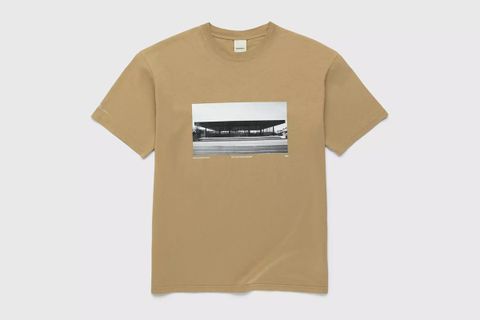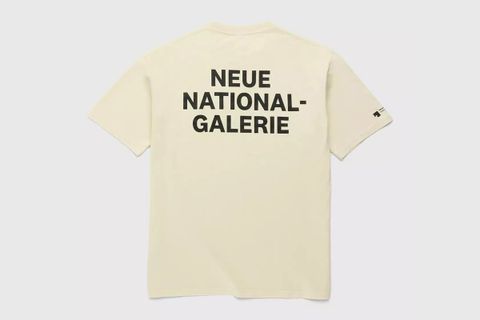Our Latest Collab Honors a German Art Movement You (Probably) Didn't Know
The third edition of BERLIN, BERLIN has arrived. From in-person pop-ups and parties, to exclusive content and products, we're delving into Berlin's creative culture. Explore the content here and browse the drops here. BERLIN, BERLIN is made possible thanks to support by the Berlin Senate Department for Economics, Energy and Public Enterprises.
It's not uncommon for a museum's building to be as much of a piece of art as the works it encases: the Guggenheim Museum in New York is one of Frank Lloyd Wright's most complete buildings, the Louvre attracts almost as many tourist photos as the Mona Lisa, and James Stirling's Neue Staatsgalerie in Stuttgart pushed postmodern architecture to a new plane.
The last of Ludwig Mies van der Rohe's major projects to be built, the Neue Nationalgalerie is no different.
Commonly known as Mies, the architect came to prominence in the Weimar Republic as a leading figure in Neue Sachlichkeit, a movement among visual artists that was centered in 1920s Germany. It encompassed everyone from painters to filmmakers as they rallied together against the romanticism of expressionism that felt out of touch in a country struggling post WW1.
Neue Sachlichkeit's substantial influence later made it a source of inspiration for the realism of Francis Bacon and Lucian Freud as well as much of modern architecture, although it never had a formal manifesto and was cut short by the Nazi regime for its socialist beliefs.
The likes of Le Corbusier and Walter Gropius would come to define this movement within architecture, operating with the premise that Mies famously called "less is more."
Typically, this included using a combination of steel framing, glazed concrete, and glass to create an airy and minimal space; features that have made the Neue Nationalgalerie such a famous building. Built in 1968, it concluded Mies' seminal role in both Neue Sachlichkeit architecture and its immense influence on Bauhaus — the design school that he was famously the final director of before its closure.
Our latest collection with the museum references the iconic building and the man behind it, but this time we also got to explore what's inside the museum. As well as its large collection of German expressionist painters, the building houses influential artworks from the opposing Neue Sachlichkeit movement in 1920s Berlin.
This includes a group of German painters including Max Beckmann, Otto Dix, and George Grosz, who's rendition of realism focused on the everyday reality of life in the Weimar Republic. It held up a mirror to the ugly and unsavory parts of post-war life in opposition to the abstract notions that had dominated in the pre-war years.
Namely, this includes Christian Schad's painting Sonja (1928), which is part of the Neue Nationalgalerie's permanent collection. Following his practice in Schadographs (photos created without a camera) which gave him a name within the Dada movement, his painting in the Neue Sachlichkeit manner began after moving to Italy in 1920 which was followed by moves to Vienna and Berlin as he became a central figure in that school of painting.
A stark contrast to the muted colors and angular edges you will find in the building's design, the painting is a soft portrait depicting a tired-looking Sonja smoking a pack of Camel cigarettes with white tablecloths, champagne in an ice bucket, and suit-wearing men around her. These elements combine to set a decadent scene that you can find at the back of a hoodie in our new collection.










